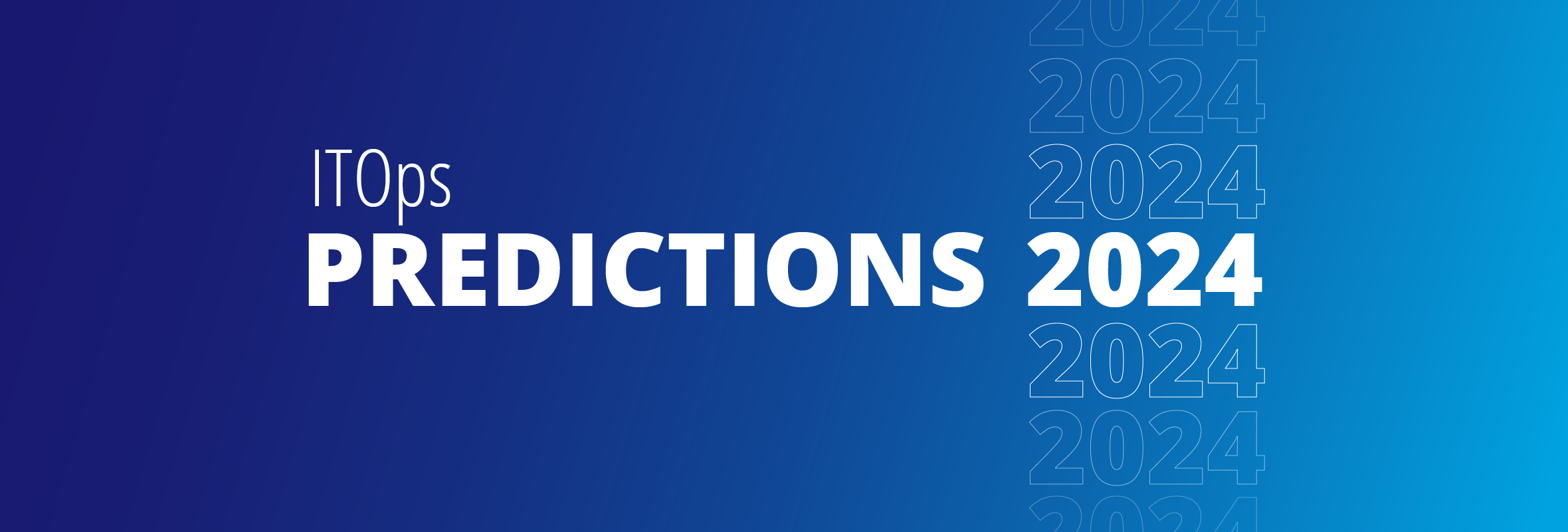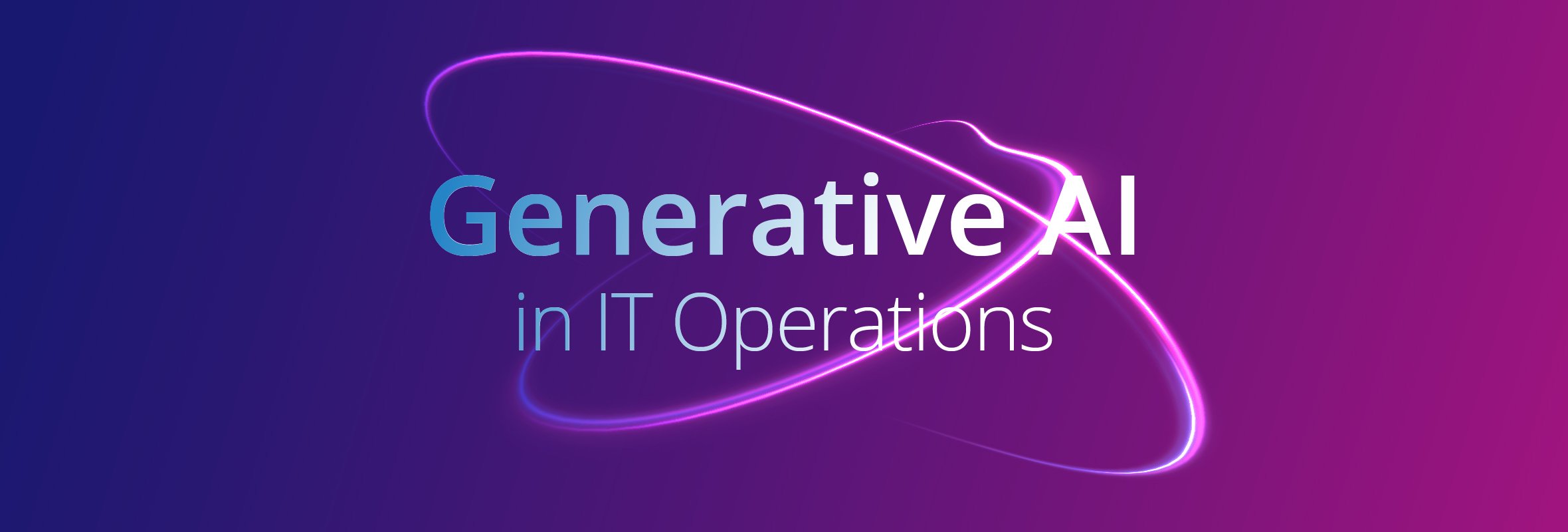If one story stands out in the tech industry for 2023, it was the coming-out party for generative AI. OpenAI’s ChatGPT artificial intelligence chatbot, which was publicly released late in 2022, seized the industry’s imagination in 2023, becoming the fastest-growing consumer application ever. The technology quickly evolved throughout 2023 with a paid subscription service; an API; iOS and Android versions; an enterprise version; plug-ins; and an AI image generator. Meanwhile, Meta, Google, Anthropic and eventually Amazon launched their own AI chatbots. Microsoft and Snapchat built AI tools on ChatGPT.
The rest of the year saw inflation persist, but moderate, and interest rates rise while a recession, thankfully, never really took shape. Of course, the biggest news for us was OpsRamp’s acquisition by Hewlett Packard Enterprise, driven by the stated goal of “advancing hybrid cloud leadership” by integrating OpsRamp’s hybrid digital operations management solution with the HPE GreenLake edge-to-cloud platform.
I’m happy to say our internal technology experts at OpsRamp saw hybrid cloud management as a key trend to watch in 2023:
 |
“The inflationary economy and the increase in energy costs will result in a considerable shift and investment in AIOps, cloud, and automation to attain sustainable and cost-effective hybrid IT monitoring.” Kaveri Kalavath, |
|
“The journey from AIOps to observability will be a mandatory capability for managing hybrid environments and generating business returns in 2023." Manjunath M, |
 |
So let’s take a look at how our OpsRamp experts are expecting to see ITOps evolve in 2024.
AIOps
With generative AI the big tech story of 2023, much of the focus of our 2024 predictions is not surprisingly, AIOps and generative AI’s impact on it. While generative AI certainly has the potential to translate ITOps data into real language and recommendations that anyone can understand (a trend we saw developing in last year’s Predictions blog), 2024 will bring new developments in AI and new use cases in generative AI, but also new challenges. Service providers will have unique needs to be met, generative AI will have an impact on automation and all of that AI will claim IT resources and require both new monitoring capabilities and more focus on the network.

|
“Service providers will continue to drive their requirements in expanding their AIOps use cases with a broader set of personas to create a stronger value message across their buyer segments. An increased tendency to buy and integrate vendors delivering ‘Generative AI’ use cases for incident management will be seen with service providers, with stronger focus to deliver cost optimization and deeper business insights as committed outcomes to their customers.” Sreenivasan Subramanian, |
|
“Generative AI methodologies will expand beyond assisted remediation to predictive automation, simplifying existing automation processes, eliminating repetitive processes and keeping systems running when changes are made. This will get us to the true promise of AIOps faster. “ Radhakrishna Kukunuri, |
 |

|
“IT Operations teams will be tasked to manage applications that perform inferencing for generative AI, but this expanding use of generative AI will create new demands on compute and networks. Large language models like generative AI consume a lot of network bandwidth, which can slow network performance and latency. I expect to see many organizations upgrade their network infrastructure in 2024 to support these new applications and deploy network observability to stay on top of network performance issues that do arise.” Mahesh Ramachandran, |
|
“As generative AI use cases expand, enterprises will have to pay more attention to how fast their GPUs can keep up with the I/O demands of generative AI, and how much their power consumption increases. Performance monitoring of GPUs, along with power monitoring and sustainability, will become key to infrastructure monitoring strategies in 2024.“ Suresh Vobbilisetty, |

|

|
“AI doesn’t happen in a vacuum. It requires software, hardware and expertise to train and tune AI models before you can bring new AI technologies to market. GenAI will create new demand for MLOps technologies to monitor these AI training models, which are resource-intensive and need to operate at peak performance in order to be effective.” Neal Pearson, |
Observability
OpsRamp made some waves in observability in 2023, rolling out our distributed tracing capabilities and enjoying our first full year of log management support, after introducing that late in 2022. But observability is also about metrics like sustainability and cost controls/monitoring. Our internal observability experts think those metrics will be the story of observability in 2024, while OpenTelemetry continues to advance. Edge to cloud device monitoring will create new observability use cases as well.

|
“In 2024, the observability industry is expected to focus on integrating sustainability and cost management, which are inevitably intertwined. Data processing will become more energy-efficient reducing environmental impact and operational costs. Cloud-based solutions will continue to offer scalable and more cost-effective alternatives. A key driving force for innovation in this space will be sustainability.” Jayanth Putta, |
|
“OpenTelemetry will continue to grow in acceptance and importance as the industry-standard way to instrument, generate, collect and export telemetry data across logs, traces and metrics. This will enable greater adoption of observability technologies and a more standard approach to analyzing and realizing value from the observability data. Hopefully OpenTel graduates as a project (it’s currently at the incubating stage) at the Cloud Native Computing Foundation (CNCF).“ Neil Pearson, |

|

|
“The rapid evolution of cloud edge computing and the increasing complexity of IT environments will necessitate new AI-powered observability strategies to include the monitoring and management of distributed edge to cloud devices. This together with the resulting data influx will lead to a surge in AIOps vendors to integrate with generative AI for increased efficiency, cost savings and better user experience.” Kaveri Kalavath, |
The Discovery to Resolution Pipeline
So it’s safe to say we’re expecting a lot from both AIOps and observability in 2024. But what happens when you combine AIOps and observability? That is, discovering application and infrastructure from the edge to the cloud, instrumenting those assets with observability to collect data, then processing the resulting alerts and signals and making sure the source of those alerts and signals are properly understood to find probable root cause. Add automation and you have the discovery to resolution pipeline. This outcomes-focused approach will be key to successful deployments of observability and AIOps in 2024. This isn’t a new trend; we spoke a lot about outcomes in last year’s Predictions blog. But we expect the focus on outcomes in AIOps and observability to become even sharper this year.

|
“The discovery to resolution pipeline will play a major role in delivering business services to end users, wherever they are in the world, in 2024. Organizations that take this approach will become more proactive and predictive, rather than reactive in their IT operations. They will reduce the number of human actions required to find and remediate a problem. This will improve business service health for the end customers and optimize costs. This is the kind of outcomes-based approach to both observability and AIOps that we expect to see more of in 2024.” Varma Kunaparaju, |
Follow the OpsRamp blog as we delve deeper into these topics throughout 2024.
Next Steps:
- See how we did: Read the 2023 Predictions Blog
- Read the OpsRamp Guide to AIOps
- Learn more about Hybrid Observability at OpsRamp
- Follow OpsRamp on Twitter and LinkedIn for real-time updates and news from the world of IT operations.
- Schedule a custom demo with an OpsRamp solution expert.





